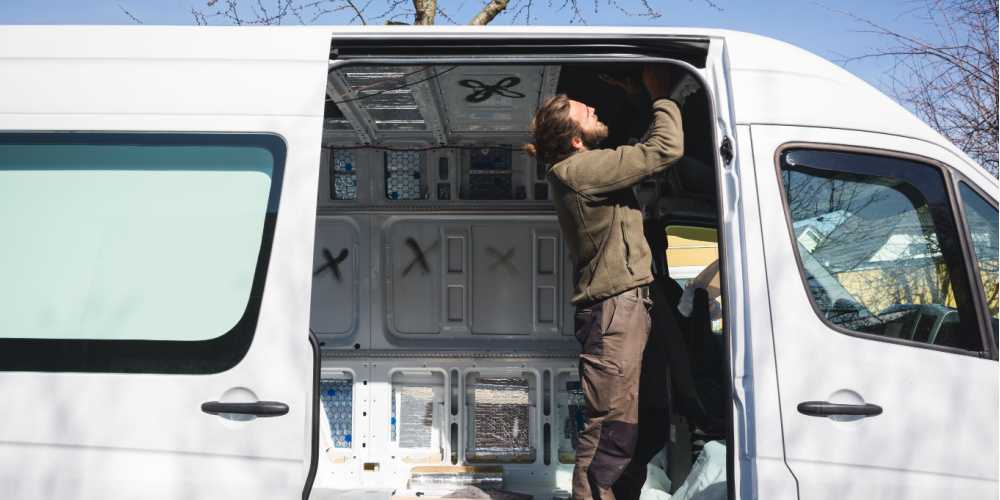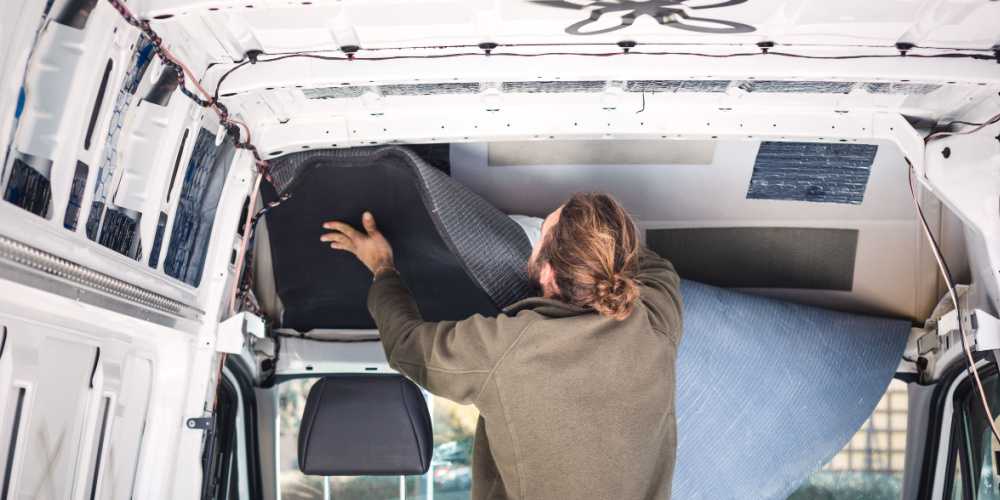How to Effectively Insulate a Van
When renovating or converting a van for habitation, insulation is an extremely vital component, particularly if you want to be comfortable inside the vehicle during the colder months of the year. However, it may be challenging to determine which kind of insulation to use and how to install it in the van in such a way that you get the most benefit from it.
The idea is to create resistance to the flow of heat that is either escaping or entering the van. That’s where insulation comes in, because it’s a poor thermal conductor, which means that it slows down the movement of heat. Therefore, this can help to retain the heat in your vehicle in the colder months of the year and, in the summer months, it can have the opposite effect and keep the inside of the van cooler, by slowing the entrance of heat into the cabin.
Insulation can also work to reduce the risk of condensation, which can corrode and rust the van much quicker if it’s not prevented.
Selecting the right insulation material
Selecting the right material for your van can be important. There are a number of different insulations available, such as Extruded Polystyrene, Polyisocyanurate, Reflectix, Sheep's Wool insulation, and many more. It's crucial to find one that works for you.
When choosing the material, there are a few things you need to look out for:
Highest thermal resistance, or R-value possible
The 'R-value' of insulation materials is a measure of their thermal resistance, which is how well they can resist the transfer of heat. When looking for materials, it's important to prioritise the R-value. Materials such as foam boards, spray foam insulation, and wool normally have strong thermal properties.
Space
Living in a van for even a short period of time will make you appreciate the need for space, and there's not a lot of it inside a van to start with! So it's essential to find insulation that does an adequate job, but which at the same time isn't so thick that it takes up too much room. Things like foam boards and aerogel insulation work really well and aren't too thick, saving you precious space.
Moisture resistance
Moisture can build up in vans, especially in wet places or when the van is used for things like cooking or taking a shower. It's important to choose insulation materials that are resistant to moisture, or at least can withstand moisture without losing their insulating qualities.
Moisture-resistant insulation choices include spray foam insulation with closed cells and extruded polystyrene foam boards. It's also important to ensure your van has adequate ventilation to let fresh air in and stagnant and damp air out.

The best price you can find
You don't want to break the bank, but you also don't want to cheap out and then have to pay twice to re-insulate your van if you didn't do it properly in the first place. Wools such as mineral wool, glass fibre wool, polyester wool, and sheep wool all have different price ranges and can be quite cheap, but they all have their own pros and cons; therefore, it's good to do some research before you purchase. With the rise in popularity of Van Life in the UK in recent years, there's almost no end to the number of van conversion videos you can find online, and these can be a great source of advice and expertise.
Safety & fire risk
Whilst it may go without saying, make sure you only use insulation that is designed for the job at hand and doesn't contain any materials that may be hazardous, such as asbestos, or pose a fire risk. If in doubt, speak to a specialist for expert advice on insulating your van.
Make sure it can withstand cold, moisture and dew
There are many forms of insulation, some of which may be more prone to mould growth than others. Materials such as foam that naturally reject moisture and are therefore more resistant to mould growth can have advantages in the long run.
Addressing the main areas of heat loss
When it comes to insulating your van, there are a few interior weak spots that require most attention and should be given priority. These areas are the most significant contributors to heat loss and so sorting them out should deliver the biggest gains.
Windows: Vans have lots of glass, at minimum a great big piece at the front called a windscreen and one at each side, called windows! Maybe some at the back too. Sadly, glass lets in almost all of the radiant energy (heat) directed at it, so one of the best ways to keep your van cool in the summer is to reflect that heat back out. Window blinds can be fitted and it’s easy to find a heat reflector for your windscreen these days.
In the colder months, the reverse logic applies. If you want to heat your van up for free, park it facing the sun, but remember that the absorbed heat will escape back out through your windows quickly later in the day, so properly fitted blinds will help here as well, to keep the heat in.
Walls and floor: The walls and floor of a van typically do not have any insulation; therefore, they too are somewhere that will need attention if your van is to become a comfortable living space. You could opt to insulate using insulation foam, foam board insulation, and insulation mats that are developed exclusively for vans. Make sure there are no gaps in whatever insulation type you use.
Roof: Much like the walls and floor, the roof is a great place for heat to be lost from the van; therefore, insulating the roof with foam and insulation materials is a great way to prevent heat loss through the roof.
See how much you can save
Compare electric van insurance quotes today!
Maintaining a well-insulated van
In order to maintain a well-insulated van, you need to be aware of what to look out for and how to prevent future issues from arising over time.
Keep your van clean and in good condition
It is important to maintain a clean van that is free of dirt in order to keep the van's insulation in good condition over time, preventing it from losing its ability to insulate. Dirt and debris can cause the insulation to break down. The accumulation of dirt and dust can be removed by getting into the habit of doing routine cleaning tasks such as sweeping, vacuuming, and dusting, which will also make your living space a much nicer experience!
Inspect your van and the insulation
Check your van on a regular basis for any problems that could affect the insulation. This includes regions where the insulation may have migrated around over time, as well as areas where dirt may have built up, plus fissures and apertures.
Ventilation
Condensation, uncontrolled humidity levels, and issues like rust, rot, and mould can all be avoided by properly ventilating a space adequately so that the air quality remains high. Having great ventilation will help ensure that the insulation in your vehicle does not break down or be affected by rot and mould.
Protection from damage
Insulation is susceptible to deterioration due to the everyday use of the van and impacts upon it. As a result of these factors, the insulation may become less effective over time and may need to be replaced. For this reason, it is essential to use protective coverings or barriers, such as flooring and wood, in order to safeguard it.

